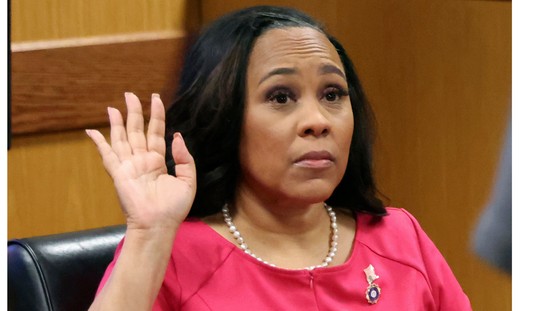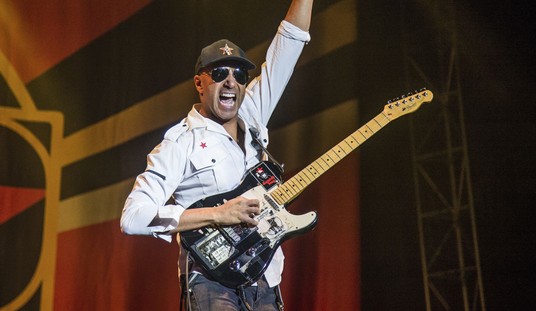This should really be the question of the 2020 cycle, but we won’t get an answer until the year is almost over. Just like in every other cycle, pollsters are working overtime to get their data out into the public, and analysts looking for insight — or perhaps just hoping to succeed as soothsayers — jump all over them. Polling has never been terribly reliable at this point in any cycle, but this year’s crises and challenges should make us all very skeptical about any predictive value.
As usual, we have dueling headlines from pollsters over the presidential race. The Washington Post/ABC poll today declares that Joe Biden has a double-digit national lead among registered voters, 55/40, and eleven points among “certain to vote” respondents:
President Trump faces a significant challenge in his bid to win reelection in November, with former vice president Joe Biden holding a double-digit lead nationally and the president’s approval ratings crumbling amid a spreading coronavirus pandemic and a weakened economy, according to a Washington Post-ABC News poll.
The survey portrays an embattled president whose fortunes have declined markedly since the coronavirus arrived in the United States months ago. Trump’s prospects for winning in November appear to depend heavily on his ability to rally an enthusiastic core base of supporters and on convincing a broader swath of a largely skeptical public that he is dealing effectively with the pandemic.
Biden leads Trump 55 percent to 40 percent among registered voters. That compares with a 10-point Biden lead in May and a two-point edge in March, at a time when the pandemic was just beginning to spread rapidly in parts of the country. Among those who say they are certain to vote, Biden’s lead stands at 11 points.
“Certain to vote”? We’ll get back to that in a moment. Also today, the latest Fox News poll declares that Trump has started to make up ground:
The virus is the top issue to voters, over half of them disapprove of how President Trump’s handling it, and they increasingly trust Joe Biden to do a better job on it. That keeps Biden ahead in the presidential race, according to a Fox News survey of registered voters.
Biden leads by 8 points over Trump, 49-41 percent.
That advantage is outside the margin of error. However, neither candidate receives 50 percent support and 10 percent are undecided/back someone else — and the race has narrowed since June, when the former vice president was up by 12 points (50-38 percent).
That’s actually a margin-of-error change, which means it might not be a change at all. But that’s not really the point either. These polls suffer from significant defects, not the least of which is that national polling overlooks the fact that presidential elections are conducted on a state-by-state basis. That is an ongoing problem with national electoral polls, but this year there is even more reason to be skeptical.
For one thing, let’s talk about “certain to vote” in the context of COVID-19. Creating a likely-voter model is tough enough in any cycle, and usually can’t be taken seriously until after the conventions. The pandemic has introduced even more uncertainty into that equation. If states don’t adopt mail-in balloting — and there are very good reasons not to do so — how many of these people will show up at the precinct voting stations? If we get a miracle vaccine between now and the election, many of them, but otherwise the word “certain” contains a lot of hubris.
Next, let’s discuss all of the urban unrest taking place at the moment and the sharp rise in crime that has resulted from it. How safe will voters in the cities feel, especially if they have to wait in lines for an hour or more to cast their ballots? What happens to the predictive value of these polls if that depresses the vote in cities? No one wants to see that happen, just as no one wants to see a spike in crime, but it’s a legitimate question as of now. Do pollsters have that figured into their models? I suspect not, and that could be a huge game changer for Democrats if this unrest and crime wave extends all the way to November.
Put on top of that all of the social pressure people now feel to endorse the cultural demands of the moment in any public engagement. We can add in the ongoing claims of a large number of “shy Trump voters,” I suppose, even though there isn’t a lot of data support for that. Trump didn’t win in 2016 by turning out shy voters; he won because Hillary Clinton failed to turn out hundreds of thousands of previous Barack Obama voters in Wisconsin, Michigan, and Pennsylvania, and Minnesota too for that matter. It doesn’t mean that the phenomenon doesn’t exist, but it didn’t show up in the 2018 midterms, when Democrats recovered their turnout potential. At the very least, it’s a claim that predates this year’s polling.
The bottom line is that there are more reasons for skepticism about polling and predictive models than ever. That doesn’t just apply to presidential polls but also to Senate, House, and gubernatorial polling as well. The only polls that might have some value are issue-related polls, and even those are still just snapshots in time.
Pollsters won’t stop doing surveys and we won’t ignore the results, but perhaps we should recognize the chaotic context in which they take place. For myself, I’ll take policy polls more seriously and let those inform whatever predictive impulses I might have for elections, at least until after Labor Day at the earliest. Watch especially for the COVID-19 polls and the balance between economic imperatives and pandemic priorities. For now, that might be the best proxy for the direction of the electorate in November.








